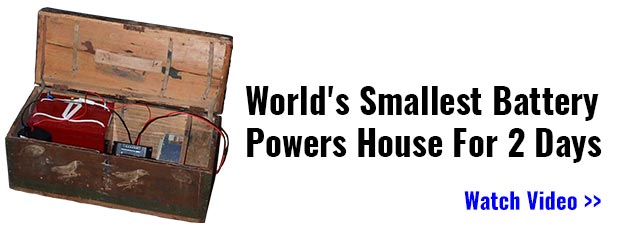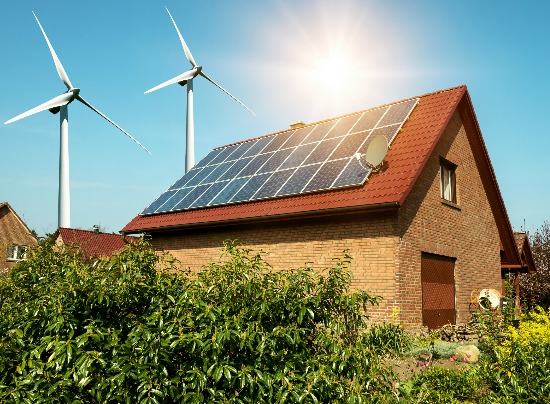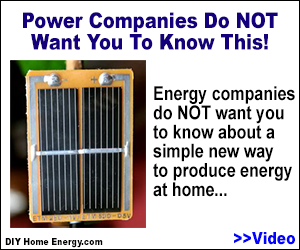There are actually a lot of different types of energy sources to tap into after a disaster strikes. One of the major differences is that unless you have formed some kind of intentional community or have a group of like-minded individuals in your area, you will be the engineer, the mechanic, and the maintenance man all rolled into one.
To digress just a bit, this is why shows such as “The Colony” (the reality show, not the aliens), and “Doomsday Preppers” are productive for the introduction of ideas. Those ideas need to be researched and employed, in that order.
Let’s cover some methods to generate energy and provide power, and discuss the positive and negative aspects of each one.
- Wood: absolutely a mainstay after disaster strikes. I’ve written several pieces on the benefits of wood stoves: for cooking, boiling water for washing, laundry, and drinking, and of course, for heat. For those with a fireplace and no woodstove, a set of Dutch ovens (cast-iron cookware) and a kettle that can be hung within it are good for starters. There are also racks out there for hanging laundry and taking advantage of the heat from the fireplace or the woodstove. The main problems with the woodstove are fuel and security. First, you need to lay in a good supply of wood long before either the winter and/or the disaster strikes. Secondly, the wood fire produces smoke, something that cannot be concealed, and this will alert others to your location.
- Solar: It’s always worthwhile to throw some panels up on the roof, as these can give at least a trickle charge, if not power everything you have. Undertaking this is fairly uncomplicated. During your spring, summer, and fall months, you’ll get a lot out of it. Winter is a different matter: not just for the snow, but also for the gray days where you won’t receive that much light. There are even solar generators. These would be especially good for the bug-out-bag because the portable solar panels roll up for easy tight-fitting spaces.
- Wind: There are plenty of kits out there that will enable you to throw up one or more windmills, and these can take up the slack for the solar panels on days that there is not much in the way of the sun. Windmills also need to be maintained a little more, as they can be damaged or have a breakdown from the moving parts.
- Bicycle Generator: Please take note: this is a generator that runs from pedal power, as in a stationary exercise bicycle that doesn’t move…just turns that front wheel. The wheel provides the power to turn a generator flywheel. There are many different plans and kits available here, as well. Basically, all you need is a generator of some type, a belt to rig up on the front wheel of the bicycle, a voltage regulator (so you don’t overload/blow out your battery), and the battery itself.
- Wood Gassifier: this contraption is made from a container holding a heat source (fire) that in turn heats another container filled with wood pieces. The resulting wood gas is then channeled to the carburetor of an engine and directly used by that engine for fuel to run on. The fuel tank is bypassed, as the wood produces a gas. The engine then turns a flywheel that is hooked up to an alternator, and your power is then produced…that can charge a battery array. There are plans all over the Internet for these gassifiers.
The time to begin undertaking these projects is now, prior to needing them. One other problem has to do with the human element, an element more inhumane than anything else. Local building codes, community and residential codes, inspectors, permits, and the usual “conga line” of loser-bureaucrats coming out to steal your money and prevent you from doing anything…these are sure to materialize.
You may have to build everything and not employ it until after a disaster hits. Not to mention “friendly,” nosy, intrusive, vicious, snooping neighbors will swoop in to denounce you or cause you other forms of trouble. I’ve written about these “gems” before in the past: more deadly to deal with after the S hits the fan than the disaster itself.

Those are some basics, and you need to do some research and figure out which one (or ones) can be viable for you. There are plenty of resources out there all over the Internet, as well as in your local library or county extension office.
Take some time working with each to come up with the best possible courses of action. Then when the time comes, if you’ve prepared, you’ll be able to sing the song, “I’ve got the power,” although it will be getting kind of hectic. You’ll be able to handle it. JJ out!
source : Jeremiah Johnson




